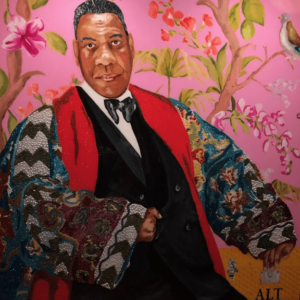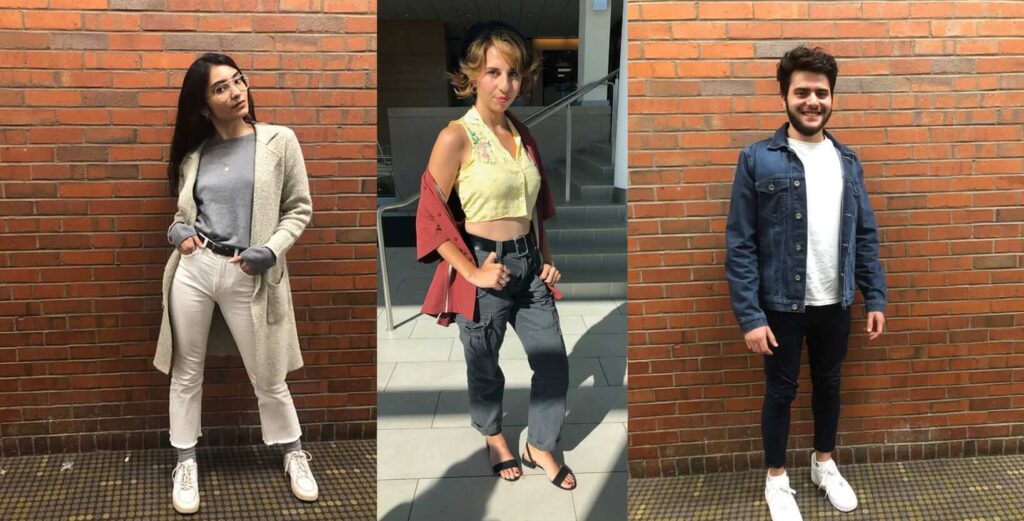Tag: Jennifer Villeda ’20
An Armor of Capes, Cashmere, and Caftans
by The Cowl Editor on October 10, 2019
Arts & Entertainment
The Graduate Providence Welcomes André Leon Talley
by Jennifer Villeda ’20 A&E Staff
Fashion hides one’s struggles in beautiful fabrics, convincing people they have everything together. But it can also serve as a mask to conceal the pain and insecurities of life.
This past week, André Leon Talley brought out the risk-taking fashionistas and artsy minimalists of Providence to gather at the Graduate Hotel for the screening of his documentary, The Gospel According to André.

A former Vogue editor and Brown University alumnus, André Leon Talley has lived a life of stories which he happily shared during the Q&A with the same vibrancy he conveyed in the documentary. He brought the audience into his life growing up in the South as a black, gay man and entering the fashion industry when it was still an exclusive community. His knowledge and love of the business had him coming up through the ranks. He was met with respect and shock as he challenged people’s perception of himself.
When the documentary was first released in 2017, the New York Times interviewed Kate Novak, the film director, who said of the work, “In many ways, this is a classic American success story. André is an important African-American cultural figure.”
He found a way to escape the formidable years of his childhood by focusing on the glamorous pages of Vogue. The magazine was his entrance into the industry where he began to explore himself. Here, he began to silently create more of a cultural context through organizing photoshoots like “Scarlett ‘N the Hood” which saw Lagerfeld creating a homage to Gone with the Wind. They had the African- American model, Naomi Campbell, play Scarlett O’Hara, while white designers such as Manolo Blahnik and John Galliano were servants.
During the Q&A, the amount of respect and enthusiasm people had for him was palpable. Every person who asked him a question started with praises for his work and the path he created for them. It was beautiful to see the way his smile lit up as he humbly accepted their words and gave them compliments; it was a heart-warming exchange between fans of his work and him. He has been one of the people to help make the fashion industry more diverse by interviewing Michelle Obama for the cover of Vogue in 2009 and making the “International Best Dressed List” more inclusive.
Watching his documentary, viewers are captivated by his manner of perceiving the fashion industry—and the world—“through the kaleidoscope of a child,” per the film’s description. Talley finds beauty in every piece, particularly in how people utilize it to communicate themselves to the world. At the Q&A, he pointed out audience members who made statements in their outfits from a sparkling blue jumpsuit with a pearl Gucci belt to a yellow camouflage two-piece with red braids.
His “armor of capes, cashmere, and caftans,” as Anna Wintour described, creates a distance between him and the world. He sees himself as a solitary figure. He told the New York Times, “I live alone. I’ll die alone, I climbed up alone and I’ll go down alone.” The people closest to him are no longer around, his good friend Karl Lagerfeld died in February of this year. After seeing him in person, it is no wonder why he gives a lot to his fans by taking the time to hear their questions and provide advice. The industry has not been kind to him, but he has spent his life making it more diverse and welcoming.
Peace out Sweatpants and Leggings
by The Cowl Editor on October 3, 2019
On-Campus
by Jennifer Villeda ’20 A&E Staff
“Style is a way to say who you are without having to speak,” says famous stylist and designer Rachel Zoe. This idea can be applied to Providence College’s self-expression—or the lack thereof. During the transition period between classes, look around at the students passing you and find that a majority of students wear activewear or PC athletic gear. Their choice of clothing makes any visitor on campus assume PC only has sports to offer and everyone is the same.
Rarely do we see students break out of this PC dress code of Nike, Lululemon, or PC apparel. Maybe this is because they find safety in blending into a group, are still figuring out their style, or fear the attention. Nevertheless, displaying your personality by expressing yourself in your clothing may have a positive impact on you and your surroundings. Kari Perez ‘22 mentioned, “If people were more willing to show how they see themselves in the inside and express that through their sense of style, then it would be easier to relate to people on the PC campus.”
When discussing fashion, Perez sees style as “a form of expression, a form of identity, and showing different parts of who you are.” She enjoys putting her stamp on her clothing, whether it be from crafting pieces like her cropped, yellow button up or incorporating her Uruguayan heritage into her looks through her beret; she references how both the French and Spaniards wear them. She describes her artsy style as a tool to inspire others to experiment with their looks.
With each day comes a different mood, and for Emili Castro ’21, that is what her clothing reflects. “Some days, I wake up and think ‘I want to be very feminine today’ and wear a skirt, tights, and a little sweater. And there are days where I want to give off a more masculine vibe, whether it be formal wear” or another option. She sees her fashion as fluid; one day, she can sport a skirt and the next day go for a pantsuit with a blazer. She could care less about what others think, as her focus is “feeling like a boss lady” and being happy in everything she wears.
For men, it can be tricky to break away from sweatpants and joggers, but Yazan Al-Issa ’20 finds ease in grabbing a pair of skinny jeans each time. From Jordan, his culture has already instilled in him a desire to dress his best. Plus, his love for European style adds to his look. He says, “I don’t mind taking risks even if it means looking different than everyone else on this campus.” Al-Issa highlights how “simple doesn’t have to be bland or not interesting or complicated. It is just about having a versatile wardrobe.” Both men and women do not have to go crazy with patterns and accessories to experiment with fashion to learn what works best for you.

If these people were in the scenarios David Cabral, professor of theatre, dance, and film, presents his students in the History of Fashion and Costuming course, their style would more closely resemble that of Brown or RISD students rather than belonging to PC.
The campus culture here centers on sports. Professor Cabral says, “You might want to deny the importance of sports, but you can’t avoid it here; even if you don’t play sports and even if you don’t go to sporting events, you still have the team gear on.” Whether we recognize it or not, the presence of athleisure and sports go hand-in-hand and make experimenting with fashion intimidating if you are one of the few people doing it. Professor Cabral notes, “Nobody wants to stick out here, everyone wants to look like we are all part of the group mentality; we are all in an arena watching an athletic event.” This mentality of following the group can become oppressive for students who choose to use their clothing as an extension of their voice.
PC is more than just sports—the students have it in them to illustrate who they are, especially through their fashion. It may seem like a superficial form of dialogue, but it is part of our first impressions of one another. The power in clothing is how it creates conversations and connections between us, and can inspire one another to experiment in their own self-expression.
